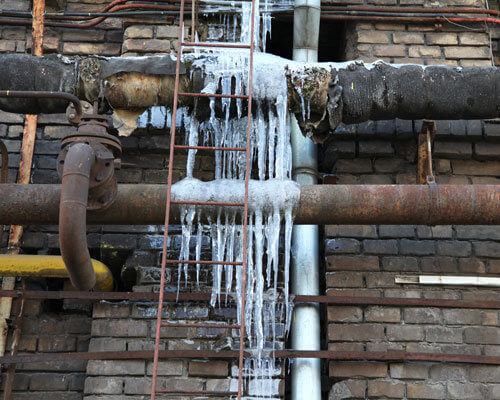How to Keep Your Pipes from Freezing Damage: Important Tips
How to Keep Your Pipes from Freezing Damage: Important Tips
Blog Article
They are making several great pointers relating to Winter Plumbing Precautions: Preventing Frozen Pipes in general in the content in the next paragraphs.

Cold weather can damage your plumbing, especially by freezing pipes. Below's how to avoid it from happening and what to do if it does.
Introduction
As temperatures decrease, the danger of icy pipes rises, possibly resulting in costly repair services and water damage. Recognizing how to prevent frozen pipelines is important for house owners in chilly climates.
Understanding Frozen Pipes
What causes pipelines to freeze?
Pipelines ice up when exposed to temperatures below 32 ° F (0 ° C) for prolonged durations. As water inside the pipelines ices up, it increases, taxing the pipeline wall surfaces and potentially causing them to burst.
Risks and damages
Icy pipelines can bring about water supply disruptions, residential property damage, and expensive repairs. Ruptured pipelines can flood homes and cause extensive architectural damages.
Indications of Frozen Pipeline
Identifying icy pipelines early can avoid them from bursting.
Just how to determine frozen pipes
Look for reduced water circulation from taps, unusual odors or sounds from pipelines, and visible frost on subjected pipelines.
Prevention Tips
Shielding vulnerable pipelines
Wrap pipelines in insulation sleeves or make use of warm tape to secure them from freezing temperature levels. Focus on pipes in unheated or external locations of the home.
Heating strategies
Keep indoor spaces adequately heated, specifically locations with pipes. Open up cupboard doors to enable cozy air to circulate around pipes under sinks.
Protecting Outdoor Pipes
Yard hose pipes and exterior faucets
Separate and drain yard hoses before winter. Set up frost-proof spigots or cover outdoor taps with shielded caps.
What to Do If Your Pipes Freeze
Immediate activities to take
If you suspect icy pipelines, keep taps open up to alleviate pressure as the ice thaws. Utilize a hairdryer or towels soaked in hot water to thaw pipes slowly.
Long-Term Solutions
Structural modifications
Take into consideration rerouting pipelines away from outside walls or unheated locations. Add added insulation to attics, cellars, and crawl spaces.
Updating insulation
Purchase top quality insulation for pipelines, attics, and walls. Correct insulation helps preserve regular temperatures and minimizes the threat of icy pipes.
Final thought
Preventing frozen pipelines calls for positive procedures and fast feedbacks. By understanding the reasons, indicators, and safety nets, property owners can secure their plumbing during cold weather.
5 Ways to Prevent Frozen Pipes
Drain Outdoor Faucets and Disconnect Hoses
First, close the shut-off valve that controls the flow of water in the pipe to your outdoor faucet. Then, head outside to disconnect and drain your hose and open the outdoor faucet to allow the water to completely drain out of the line. Turn off the faucet when done. Finally, head back to the shut-off valve and drain the remaining water inside the pipe into a bucket or container. Additionally, if you have a home irrigation system, you should consider hiring an expert to clear the system of water each year.
Insulate Pipes
One of the best and most cost-effective methods for preventing frozen water pipes is to wrap your pipes with insulation. This is especially important for areas in your home that aren’t exposed to heat, such as an attic. We suggest using foam sleeves, which can typically be found at your local hardware store.
Keep Heat Running at 65
Your pipes are located inside your walls, and the temperature there is much colder than the rest of the house. To prevent your pipes from freezing, The Insurance Information Institute suggests that you keep your home heated to at least 65 degrees, even when traveling. You may want to invest in smart devices that can keep an eye on the temperature in your home while you’re away.
Leave Water Dripping
Moving water — even a small trickle — can prevent ice from forming inside your pipes. When freezing temps are imminent, start a drip of water from all faucets that serve exposed pipes. Leaving a few faucets running will also help relieve pressure inside the pipes and help prevent a rupture if the water inside freezes.
Open Cupboard Doors
Warm your kitchen and bathroom pipes by opening cupboards and vanities. You should also leave your interior doors ajar to help warm air circulate evenly throughout your home.

As a fervent person who reads about Winter Plumbing Precautions: Preventing Frozen Pipes, I think sharing that portion was important. Those who appreciated our blog post kindly remember to share it. We truly appreciate your readership.
Further Details Report this page